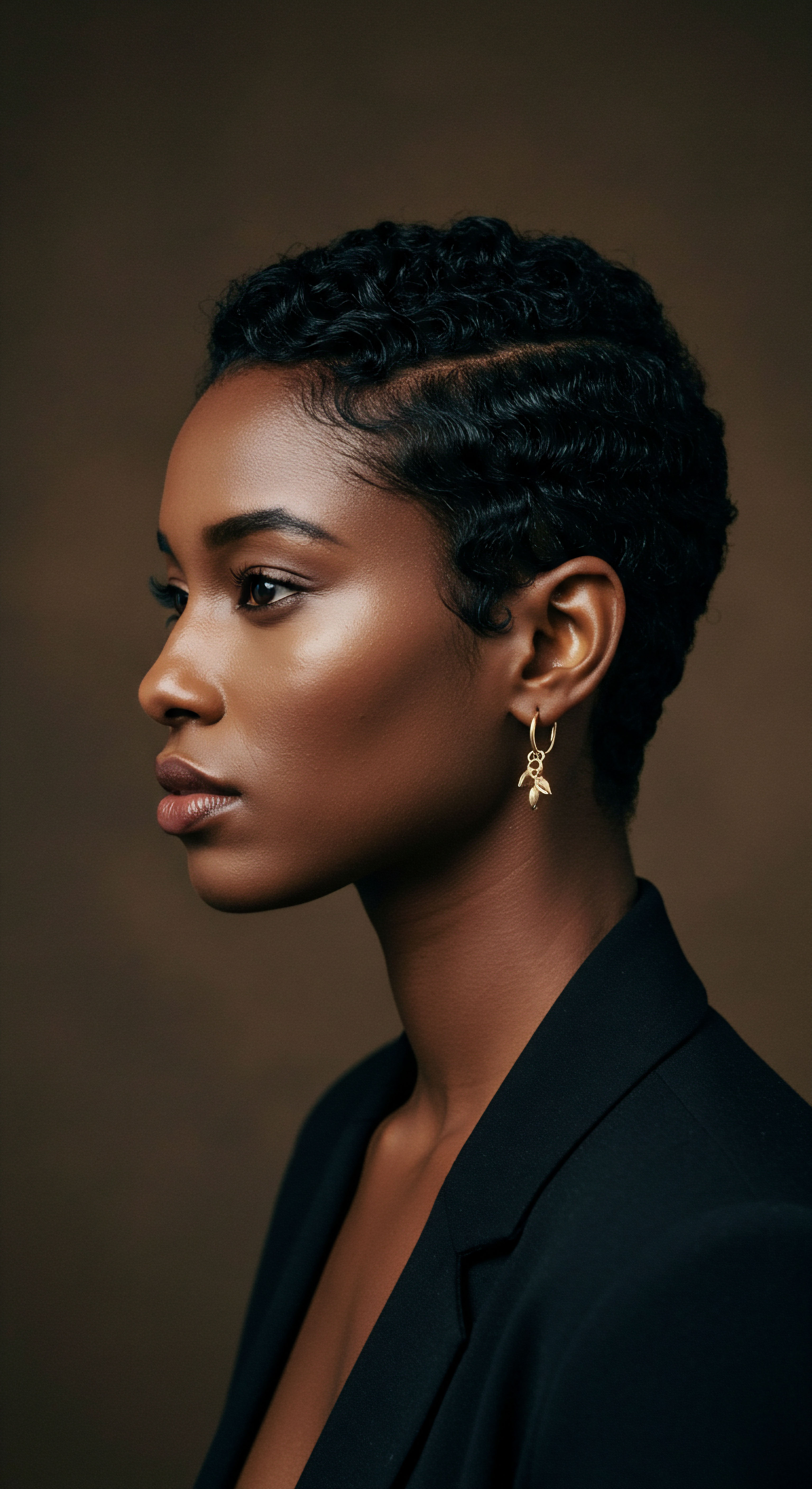
Fundamentals
At Roothea, we understand that caring for textured hair is a deeply personal endeavor, one rooted in heritage and daily ritual. When we speak of Ingredient Efficacy, we are inviting you into a gentle yet profound exploration of how the elements within your hair care creations truly interact with your unique strands. It is a dialogue between the molecular world and the visible reality of your curls, coils, and waves. This concept moves beyond mere presence on a label, instead focusing on the demonstrable power an ingredient possesses to deliver its promised benefit, particularly for the intricate architecture of textured hair.
Consider it the active purpose of each component. A moisturizer, for instance, is not simply present in a cream; its efficacy is revealed in its capacity to genuinely hydrate, to quench the thirst of a thirsty strand, and to maintain that precious moisture throughout your day. For our community, where hair often yearns for sustained hydration and definition, understanding this core principle is a guiding light. It allows for intentional choices, moving beyond guesswork to a place of informed care, where every application holds the promise of tangible improvement.
Ingredient efficacy, for textured hair, unveils the true capacity of a component to interact with and enhance your unique strands.

The Gentle Whisper of Efficacy
The initial step in grasping ingredient efficacy involves recognizing the subtle yet significant whispers your hair offers in response to care. It is the immediate softness after a conditioner, the reduced tangling, or the joyful bounce that emerges from a styling cream. These are the earliest indications that an ingredient is indeed performing its intended function. For many with textured hair, this translates into a feeling of comfort, a sense of ease in detangling, or a vibrant sheen that speaks of health.
We begin by observing the most basic interactions. Think of water, the fundamental hydrator. Its efficacy on textured hair is seen in how it softens the strands, preparing them for other applications, and how it can temporarily revive a curl pattern.
Similarly, a simple oil, like pure olive oil, offers its efficacy through its ability to provide a protective layer, sealing in moisture and imparting a lustrous appearance. These foundational interactions form the bedrock of understanding.

The Hair’s First Embrace
Every strand of textured hair possesses a unique surface, often characterized by its cuticle layers. These tiny, overlapping scales are the hair’s outer shield, and their state significantly influences how ingredients are received. When we apply a product, the ingredient’s journey begins here. An ingredient’s efficacy is thus intrinsically linked to its ability to either gently smooth these cuticles, or to penetrate them, reaching deeper into the hair’s core.
For someone new to the world of textured hair care, observing these initial interactions can be a revelation.
- Moisture Retention ❉ Does the hair feel hydrated for an extended period, or does it dry quickly after product application?
- Detangling Ease ❉ Does the product reduce friction, allowing combs and fingers to glide through with less effort?
- Visual Luster ❉ Does the hair appear shinier, reflecting light more evenly after use?
These simple, observable changes are the initial markers of an ingredient performing its intended role, guiding us toward products that genuinely serve our hair’s needs.

Intermediate
Moving beyond the initial sensations, an intermediate understanding of ingredient efficacy invites a deeper contemplation of how specific components interact with the complex architecture of textured hair. This layer of comprehension considers the chemical nuances and physical dynamics that govern an ingredient’s true contribution to hair health and appearance. It is here that we begin to appreciate the silent choreography between a formulation and the hair fiber, recognizing that superficial effects often belie deeper, more sustained transformations.
The definition of ingredient efficacy at this stage expands to include the sustained impact and the precise mechanisms by which an ingredient alters the hair’s properties. It’s about discerning the difference between a temporary cosmetic enhancement and a genuine conditioning effect that supports the hair’s resilience over time. This discernment becomes particularly vital for textured hair, which often demands a more thoughtful approach to hydration and structural support due to its inherent curl patterns and unique susceptibility to environmental stressors.

Unveiling the Ingredient’s True Purpose
An ingredient’s purpose within a formulation is determined by its chemical structure and its affinity for the hair. Consider a Humectant, like glycerin. Its efficacy lies in its ability to draw moisture from the atmosphere and bind it to the hair, providing hydration. An Emollient, such as shea butter, functions by creating a protective film on the hair surface, smoothing the cuticle and reducing water loss.
Proteins, in their hydrolyzed forms, offer their efficacy by temporarily patching compromised areas on the hair shaft, lending a feeling of increased strength. Each ingredient, therefore, possesses a distinct role that contributes to the overall performance of the product.
Observing these effects requires a more attentive gaze. Does the hair remain soft and supple throughout the day, or does it revert to dryness? Does the product offer a lasting slip for detangling, or is it a fleeting sensation? These questions guide us toward a more refined understanding of what an ingredient truly accomplishes.
True ingredient efficacy for textured hair is a sustained dialogue between a product’s composition and the hair’s unique structure, yielding enduring benefits.

Porosity’s Profound Influence
The hair’s porosity, a measure of how readily it absorbs and retains moisture, profoundly influences ingredient efficacy. Textured hair exhibits a wide spectrum of porosity levels, each presenting distinct considerations for ingredient interaction.
- Low Porosity Hair ❉ This hair type features tightly closed cuticle layers, which can make it challenging for water and products to penetrate the hair shaft. Ingredients might tend to sit on the surface, leading to buildup rather than absorption. The efficacy of lighter, water-based formulations and the judicious use of gentle heat to assist penetration become particularly noticeable here.
- High Porosity Hair ❉ Characterized by more open or lifted cuticles, this hair readily absorbs moisture but struggles to retain it, leading to rapid dehydration. Ingredients that seal the cuticle, such as heavier oils and butters, demonstrate their efficacy by helping to lock in hydration. Proteins can also be quite effective in temporarily filling gaps in the cuticle.
- Normal Porosity Hair ❉ This hair type absorbs and retains moisture well, indicating a balanced cuticle layer. A wider range of ingredients will show efficacy, making product selection more flexible.
Understanding your hair’s porosity allows for a more precise application of ingredients, ensuring their full potential is realized. For instance, a study published in the International Journal of Nanomedicine suggested that nanoparticle-based hair care products can significantly improve penetration and efficacy in low porosity hair, demonstrating how advanced science seeks to overcome these inherent structural challenges. This kind of innovation highlights the ongoing quest to enhance ingredient delivery for all hair types.
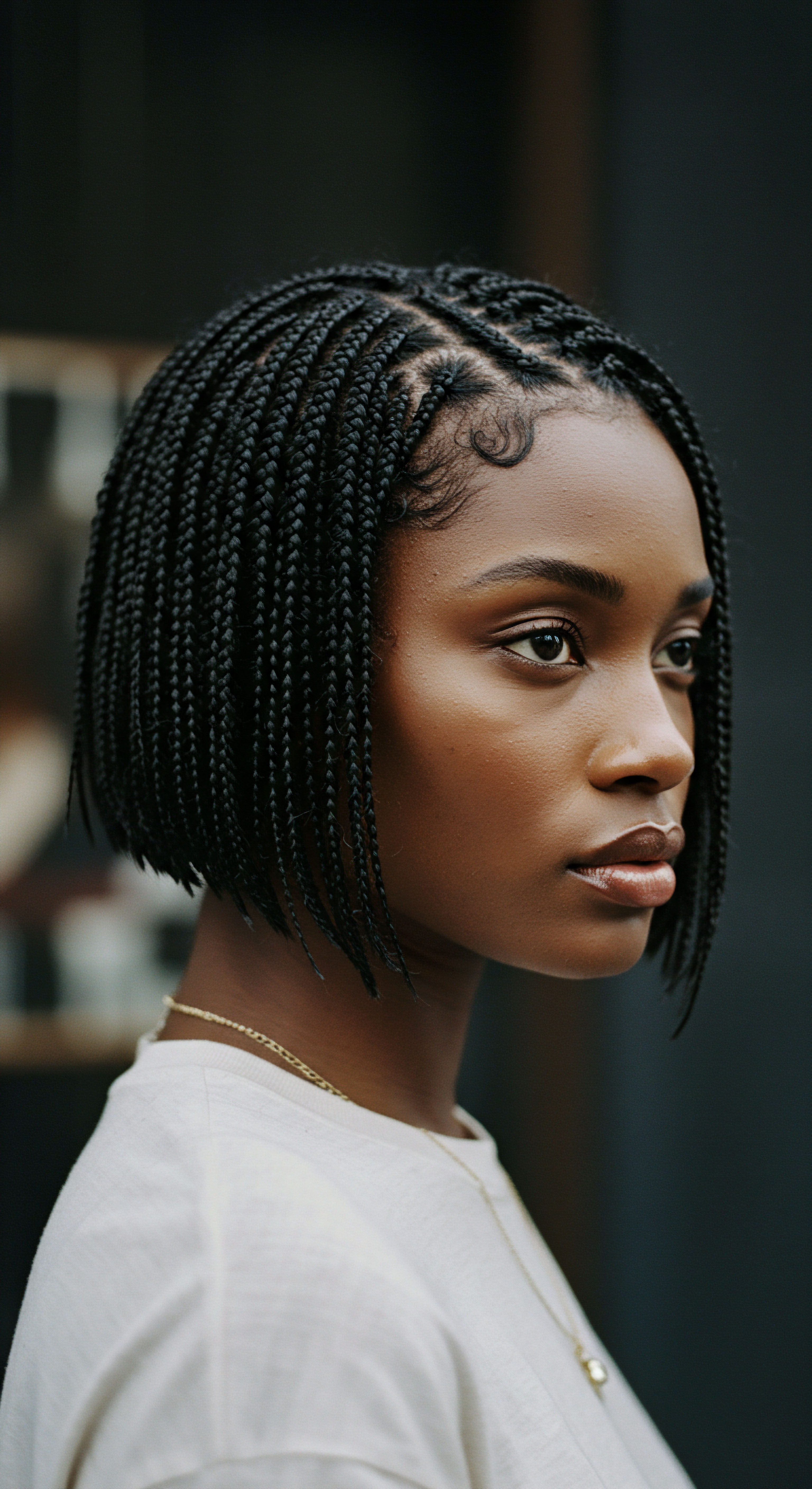
The Language of Layers
Many in the textured hair community have intuitively discovered the power of product layering, a testament to understanding ingredient efficacy in practice. The “Liquid, Cream, Oil” (LCO) or “Liquid, Oil, Cream” (LOC) methods are popular routines that strategically apply products to maximize hydration and retention.
In these methods, the initial liquid (water or leave-in conditioner) provides primary hydration. The cream offers additional moisturizing agents and emollients, while the oil acts as a sealant. The efficacy of each layer is dependent on the preceding one, creating a synergistic effect.
The oil, for example, is most effective as a sealant when applied over already hydrated strands, preventing that precious moisture from escaping. This layering approach speaks to a practical, lived understanding of how ingredients work best in concert for lasting results.
| Ingredient Category Humectants (e.g. Glycerin, Hyaluronic Acid) |
| Primary Efficacy for Textured Hair Attract and bind water to the hair, enhancing hydration. |
| Considerations for Use Perform best in humid environments; can draw moisture from hair in very dry conditions. |
| Ingredient Category Emollients (e.g. Shea Butter, Jojoba Oil) |
| Primary Efficacy for Textured Hair Soften hair, reduce friction, provide slip, and seal in moisture. |
| Considerations for Use Vary in weight and absorption; some can cause buildup if overused on fine strands. |
| Ingredient Category Proteins (e.g. Hydrolyzed Wheat Protein, Keratin) |
| Primary Efficacy for Textured Hair Temporarily strengthen compromised strands, reduce breakage, and add structure. |
| Considerations for Use Use sparingly on low porosity hair to avoid stiffness; balance with moisture. |
| Ingredient Category Cationic Surfactants (e.g. Behentrimonium Chloride) |
| Primary Efficacy for Textured Hair Detangle, reduce static, smooth cuticle by neutralizing negative charges. |
| Considerations for Use Common in conditioners; provide immediate slip and manageability. |
| Ingredient Category Understanding these categories helps tailor product choices to specific hair needs and desired outcomes. |
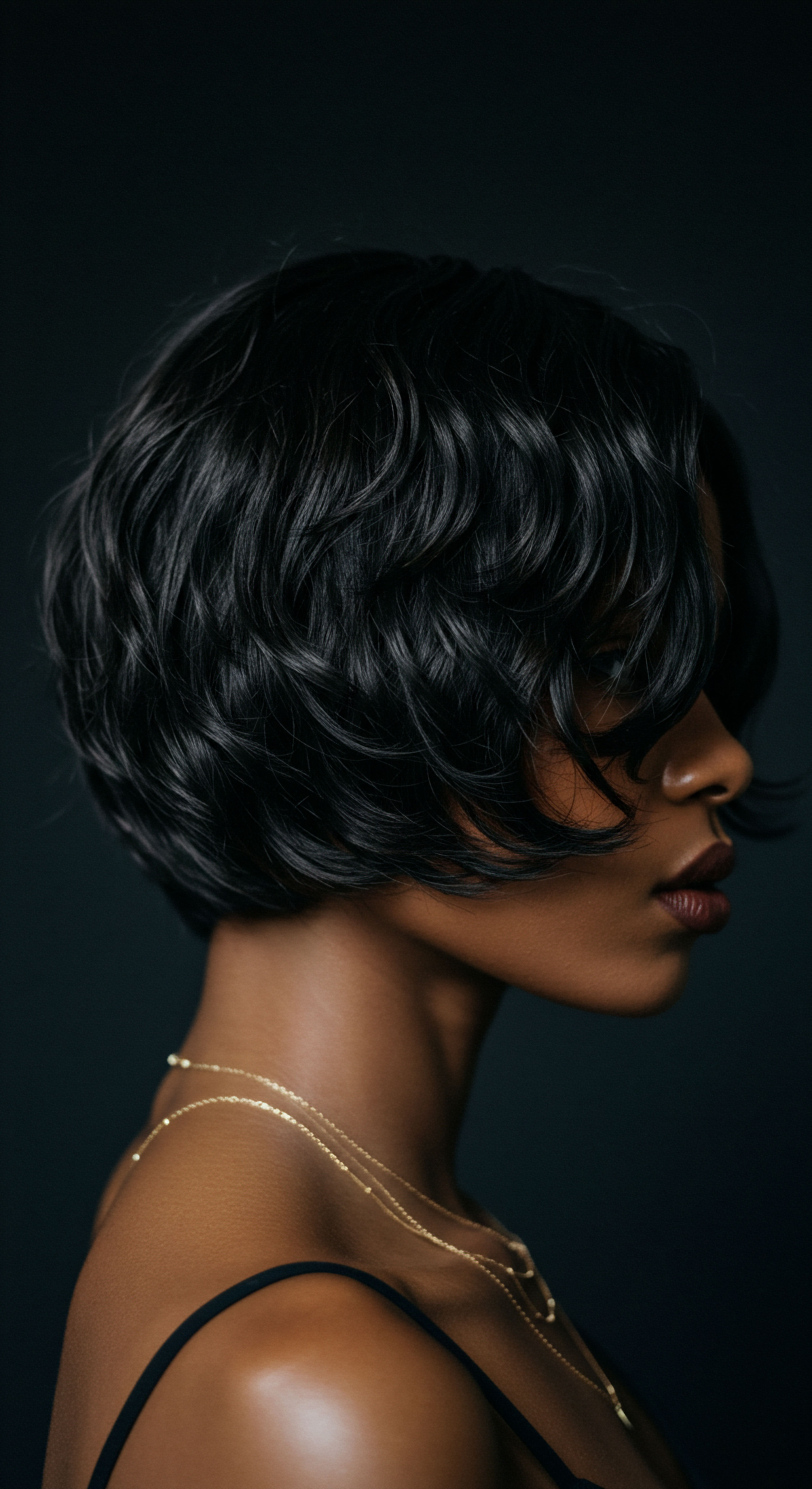
Advanced
At its most sophisticated stratum, the meaning of Ingredient Efficacy transcends a simple cause-and-effect relationship; it unfolds as a profound, interconnected phenomenon shaped by biophysical realities, historical legacies, and socio-cultural currents, particularly within the realm of textured hair. This advanced interpretation recognizes that an ingredient’s performance is not merely a laboratory metric but a dynamic interplay of molecular design, formulation synergy, individual hair fiber characteristics, and the broader context of human experience. It demands a holistic lens, one that integrates cosmetic chemistry with trichology, cultural anthropology, and even public health considerations, providing an unparalleled level of insight for experts, researchers, and discerning consumers alike.
The true depth of an ingredient’s power is revealed when we examine its long-term implications, its subtle contributions to hair resilience, and its often-overlooked cultural resonance. This is where the narrative of hair care becomes rich with meaning, moving beyond immediate gratification to address the enduring well-being of our strands and the communities they represent.

The Deep Resonance of Efficacy
Ingredient efficacy, when viewed through an advanced perspective, signifies the capacity of a specific compound to elicit a desired, measurable, and sustainable physiological or aesthetic response within the hair fiber, considering its unique morphological and chemical composition, especially as it pertains to diverse textured hair types. This involves not only the ingredient’s intrinsic activity but also its bioavailability, stability within a formulation, and its interaction with other components to optimize delivery and performance. It is a nuanced understanding that acknowledges the variability of human hair and the complex environment in which products are used.
For textured hair, this means understanding how a conditioning agent can not only smooth the cuticle but also influence the hair’s tensile strength and elasticity, crucial factors for preventing breakage in highly coiled strands. The goal is to move beyond superficial improvements to foster genuine hair health and structural integrity.
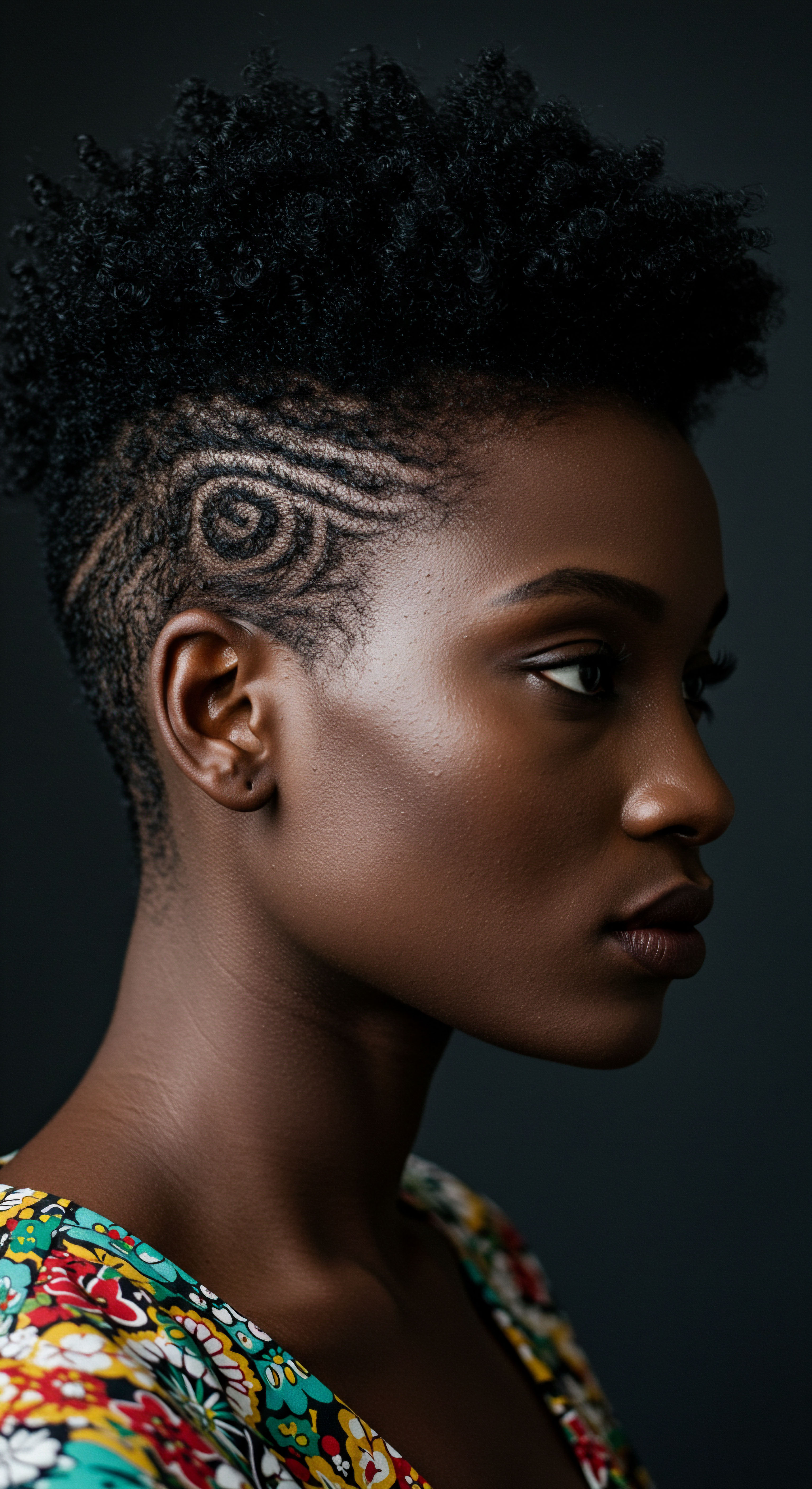
The Hair Fiber’s Intimate Chemistry
The biophysical distinctions of textured hair profoundly influence how ingredients behave. A study published in the scientific journal Cosmetics in January 2025, conducted by Brazilian researchers, utilized advanced Matrix-Assisted Laser Desorption Ionization Time-of-Flight Mass Spectrometry (MALDI–TOF MS) alongside mechanical testing to examine the penetration of popular vegetable oils like coconut, avocado, and argan into textured hair. The study found that while these oils did penetrate hair fibers, their effects on hair strength varied significantly based on hair type and whether the hair was bleached. Remarkably, despite oil molecules being present in the cortical regions of bleached textured hair (with argan oil showing the highest intensity), mechanical testing revealed limited improvements in hair strength.
The tensile test results indicated that these oils were unable to modify key parameters such as Young’s modulus or break stress in textured hair, suggesting that the oils did not deeply penetrate the hair cortex to establish new molecular interactions. This finding challenges common perceptions about oil efficacy, underscoring that presence does not always equate to profound functional improvement, particularly in the complex context of textured hair’s internal structure and its response to external agents. It highlights the need for more targeted research into how ingredients truly integrate with and fortify the unique morphology of coils and kinks.
Furthermore, research indicates that African hair often exhibits lower moisturization and less radial swelling when exposed to water compared to Asian or Caucasian hair, alongside a lower tensile strength and increased brittleness. These intrinsic differences demand tailored formulations. The efficacy of a product designed for textured hair, therefore, rests on its ability to counteract these predispositions, offering sustained hydration and reinforcement where it is most needed. The very composition of the hair, down to its lipid content and protein arrangement, dictates the precise mechanisms through which an ingredient can exert its influence.
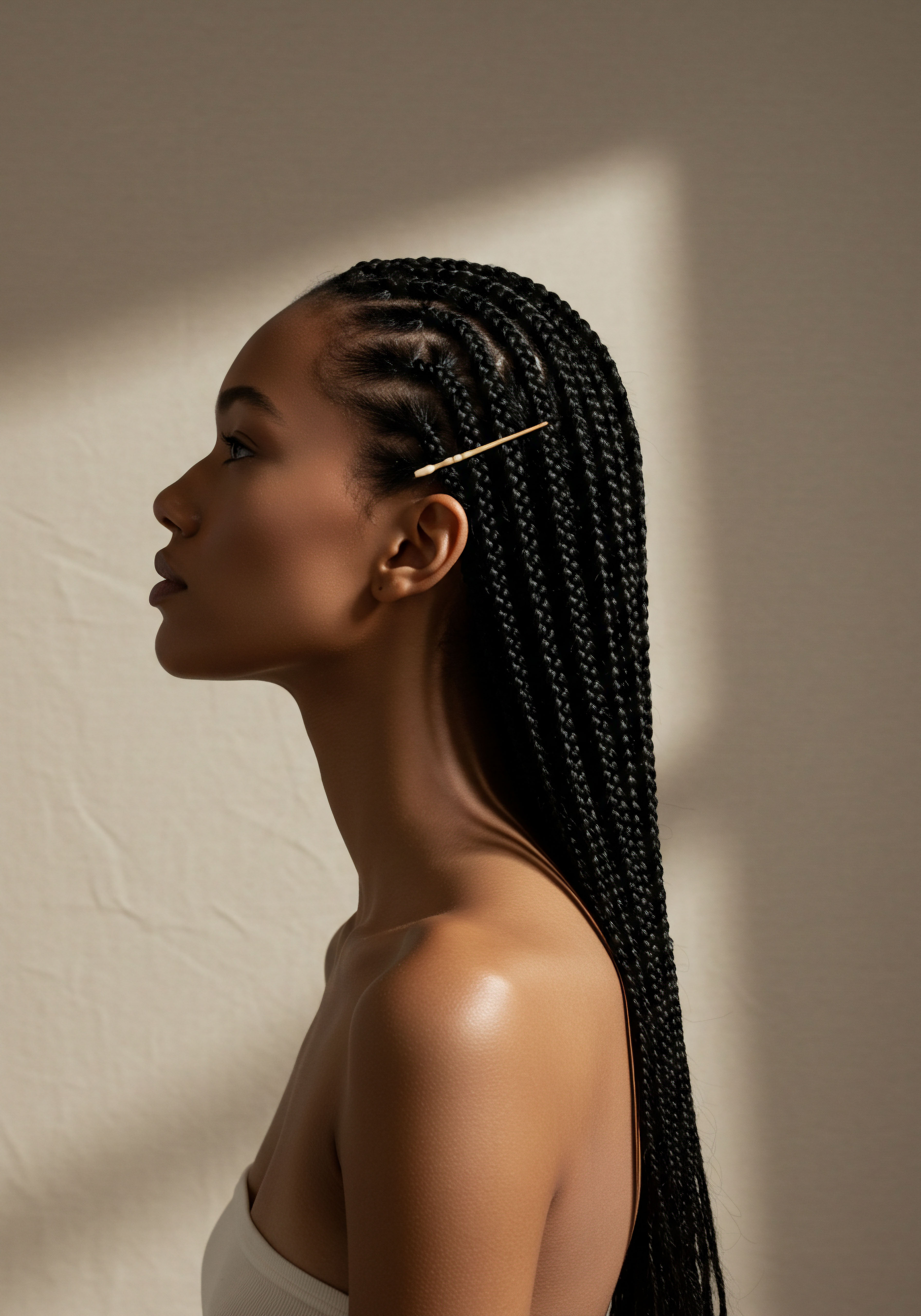
Acknowledging the Unseen Burden
The discussion of ingredient efficacy for textured hair would be incomplete without acknowledging a more unsettling dimension ❉ the historical and ongoing exposure of Black and mixed-race communities to potentially harmful chemicals in hair care products. This often-overlooked aspect directly impacts the true, long-term efficacy of ingredients, transforming what might appear as a beneficial product into a source of concern.
A growing body of evidence reveals that hair relaxers and other products predominantly marketed to Black women and girls contain endocrine-disrupting substances. These compounds have been linked to significant health issues, including early menstruation, reproductive health challenges, and an increased risk of certain cancers such as uterine fibroids, preterm birth, infertility, and breast, ovarian, and uterine cancer. For instance, a study by the Silent Spring Institute found that 50% of hair products marketed to Black women contained endocrine disruptors, such as parabens and phthalates, compared to only 7% of products marketed to white women. This stark disparity speaks volumes about systemic neglect in product development and regulation.
These chemicals not only pose direct health risks but also complicate the assessment of true ingredient efficacy. A product might offer immediate cosmetic benefits, like straightening or softening, yet its long-term impact on the body’s endocrine system negates any perceived positive efficacy. This raises profound ethical questions for the industry and underscores the need for transparent, rigorously tested formulations that prioritize the health and well-being of textured hair consumers above all else.
The very air in salons, too, can carry these substances, with Purdue University researchers discovering that cyclic volatile methyl siloxanes, common in hair care products, linger in the atmosphere after use. This highlights a broader public health issue that is intrinsically tied to the ingredients we choose to interact with our hair.

The Echoes of History in Our Hair
The pursuit of certain hair textures and styles, historically influenced by Eurocentric beauty standards, has shaped the market for hair care ingredients. In pre-colonial African societies, hair held immense social, cultural, and spiritual significance, with styles conveying identity, marital status, and even messages. The traumatic act of shaving the heads of enslaved Africans upon arrival in the Americas was a deliberate symbolic removal of culture and identity.
Post-abolition, the adoption of straightened hair became, for many, a means of survival and assimilation in a society that devalued natural Black hair. This historical context directly influenced the demand for ingredients that could chemically alter hair texture, regardless of the long-term health consequences. Understanding ingredient efficacy in this light means recognizing that cultural pressures, not solely scientific advancement, have driven the development and acceptance of certain chemical treatments.
The work of pioneers like Madam C.J. Walker, who developed hair care systems for Black women, speaks to a heritage of seeking solutions for unique hair needs, even as the industry grappled with prevailing beauty norms.
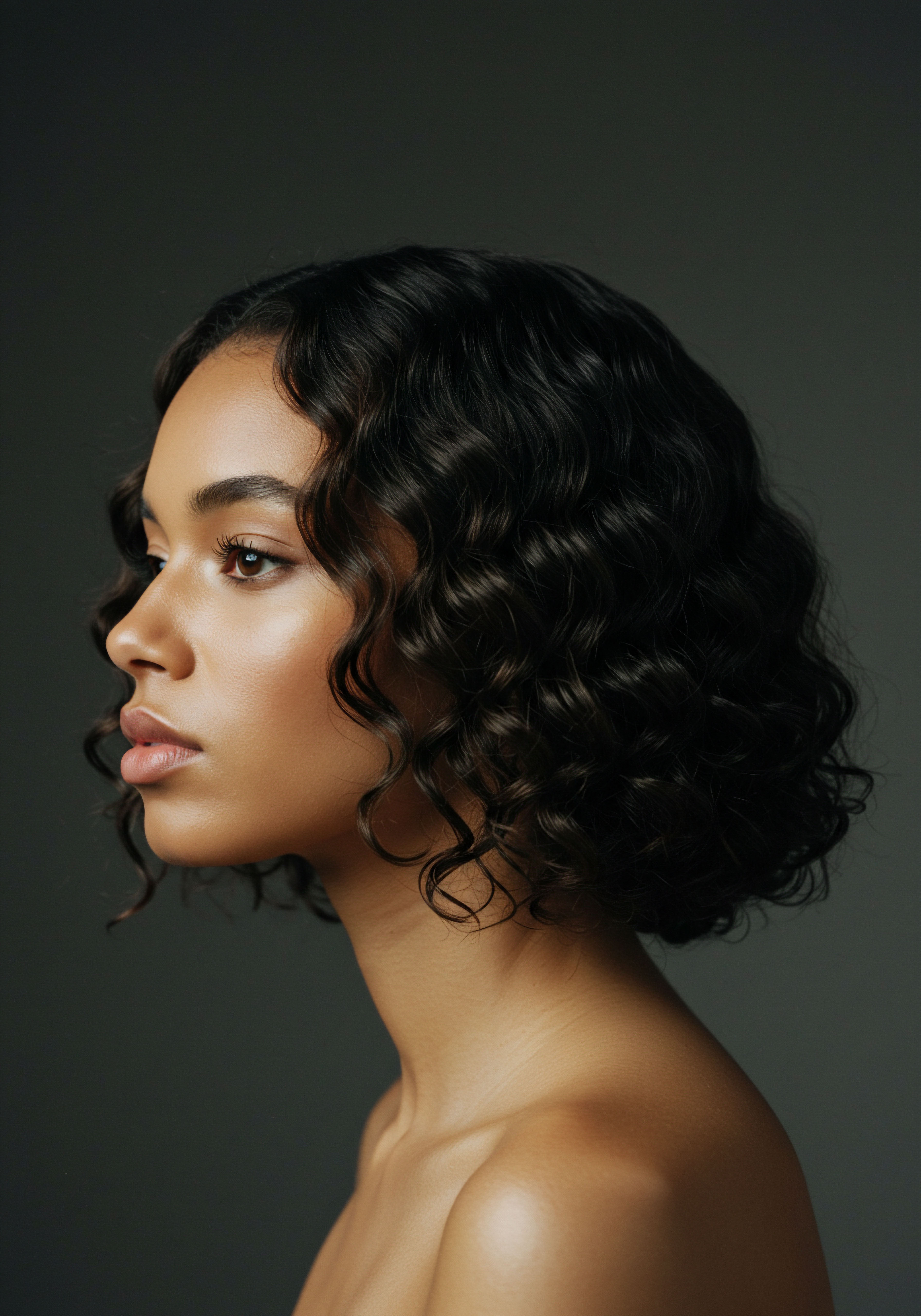
Charting a New Course
The path forward for ingredient efficacy in textured hair care demands a paradigm shift. It requires a commitment to inclusive research and development, where products are formulated and tested with the specific needs and diverse hair types of Black and mixed-race individuals at the forefront. This includes a deeper understanding of hair morphology, lipid profiles, and protein responses across the spectrum of textured hair.
Moving beyond broad assumptions, the industry must invest in studies that explore how different ingredients interact with the unique characteristics of coils and kinks at a molecular level. This precise approach will lead to formulations that offer genuine, lasting benefits without compromising health. It is about honoring the rich heritage of textured hair, celebrating its natural splendor, and providing scientifically sound solutions that truly support its vitality.
| Challenge Area Hair Morphology Variability |
| Specific Manifestation for Textured Hair Wide range of curl patterns, diameters, and cross-sectional shapes (elliptical, flattened). |
| Implication for Efficacy Assessment Standardized testing methods developed for straight hair may not accurately reflect ingredient distribution or performance. |
| Challenge Area Porosity Spectrum |
| Specific Manifestation for Textured Hair From tightly bound low porosity to highly absorbent high porosity within the same head. |
| Implication for Efficacy Assessment Ingredient penetration and retention vary drastically, making universal efficacy claims difficult to substantiate. |
| Challenge Area Moisture Dynamics |
| Specific Manifestation for Textured Hair African hair often exhibits lower water uptake and higher brittleness. |
| Implication for Efficacy Assessment Efficacy needs to be assessed not just on initial hydration but on sustained moisture balance and reduction of breakage. |
| Challenge Area Historical Product Use |
| Specific Manifestation for Textured Hair Long-term exposure to harsh chemicals from relaxers and other styling agents. |
| Implication for Efficacy Assessment Compromised hair integrity may alter how new, beneficial ingredients interact, affecting their perceived efficacy. |
| Challenge Area Lack of Representative Data |
| Specific Manifestation for Textured Hair Beauty industry historically neglected clinical testing on diverse hair types. |
| Implication for Efficacy Assessment Insufficient scientific data to fine-tune formulations and validate claims for textured hair specifically. |
| Challenge Area Addressing these challenges is essential for developing truly effective and responsible hair care solutions for textured hair. |

Reflection
As we draw our thoughts together on ingredient efficacy, a gentle realization settles ❉ the true heart of hair care for textured strands lies in a continuous, informed dialogue with our unique selves. It is a profound dance between scientific understanding and the deeply personal experience of nurturing our coils, curls, and waves. This journey toward discerning what truly works for our hair is more than a mere technical pursuit; it is an act of self-love, a reclamation of heritage, and a celebration of the inherent beauty that lies within every strand.
The wisdom we gain about ingredient efficacy empowers us to make choices that genuinely serve our hair’s well-being, moving beyond fleeting trends to embrace what offers lasting vitality. It reminds us that our hair, in all its varied forms, deserves care that is as thoughtfully crafted as it is deeply respectful. With each conscious choice, we honor not only the science that guides us but also the enduring legacy of textured hair, a story of resilience, beauty, and unwavering spirit.
Understanding ingredient efficacy is a profound act of self-love, empowering informed choices that honor the unique beauty and heritage of textured hair.

References
- Davis-Sivasothy, Audrey. The Science of Black Hair ❉ A Comprehensive Guide to Textured Hair Care. Saja Publishing Company, 2011.
- Johnson, Dale H. Hair and Hair Care (Cosmetic Science and Technology). CRC Press LLC, 1997.
- Byrd, Ayana D. and Lori L. Tharps. Hair Story ❉ Untangling the Roots of Black Hair in America. St Martin’s Griffin, 2002.
- Battistella, S.C. et al. “Penetration of different molecular weight hydrolysed keratins into hair fibres and their effects on the physical properties of textured hair.” International Journal of Cosmetic Science, vol. 43, no. 1, 2021, pp. 26-37.
- Markiewicz, Ewa, and Olusola C. Idowu. “Exploring the Use of Natural Ingredients for the Protection of Textured Hair from Ultraviolet Radiation ❉ An In Vitro Study.” Cosmetics, vol. 11, no. 4, 2024, p. 102.
- Jung, Nusrat. “Hair Care Product Emissions and Indoor Air Quality.” Environmental Science & Technology, vol. 57, no. 48, 2023, pp. 19579–19588.
- Wise, Lauren A. et al. “Hair relaxer use and risk of uterine leiomyomata in African American women ❉ a prospective cohort study.” American Journal of Epidemiology, vol. 177, no. 11, 2013, pp. 1283-1293.
- Quispe, V. et al. “Study reveals differences in vegetable oil penetration between textured and straight hair types.” Cosmetics, 2025.
- McDonald, Shirley, and Celestine Gitau. “Lichen Planopilaris (LPP) in women with Afro-textured hair. Scalp oils ❉ a therapeutic or harmful catalyst for LPP?” The Institute of Trichologists Research, 2023.
- Miranda Wood and Melissa Leyden. “Chemistry of Wellness ❉ Hair and Hair Care.” UVA ChemSciComm, 2023.
- Thomas, Chrystal. “The Health Divide ❉ Are hair products marketed to Black women a public health threat?” The Lancet, 2025.